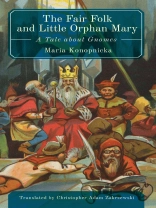A classic children’s tale about Gnomes, appealing equally, if not more so, to the adult child. Written in rich, lyrical prose, frequently shifting into the peasant dialect and interspersed with sundry verses and songs, the tale is replete with mytho-folkloric motifs, legends, superstitions, historical and biblical references, magical depictions of natural phenomena, the sunsets, the twilights, the dawns; the changing seasons, the shadows, the colors, the sounds and silences, Poland’s diverse landscape, her fields, forests and mountains, along with her flora and fauna, and realistic descriptions of late 19th-century Polish rural life. Not least among
The Fair Folk’s charms is the author’s whimsical sense of humor—a humor that often rises to a level of high hilarity.
Cuprins
Translator’s Preface
How King Glistel’s Court Chronicler Discovered Spring
Spratkin’s Expedition
King Glistel Leaves the Crystal Grotto
Spratkin Meets Little Orphan Mary
Good Times
Maestro Sarabanda’s Concert
Bluebonnet and His Student
At the Palace of the Mountain Queen
Midsummer’s Night Eve
A Thief in the Night
Half-Lord’s Alms
The Gnomes Return Underground
A Short Biography of Maria Konopnicka (1842-1910)
About the Translator
Despre autor
Christopher Adam Zakrzewski—(born 1948)—literary translator, teacher, scholar. Raised in the UK and Ontario, Canada. Doctoral studies at the Department of Slavonic Studies, University of British Columbia. Professor of languages and literature at Our Lady Seat of Wisdom College in Barry’s Bay, Ontario. He is the translator of Adam Mickiewicz’s classic Polish epic poem Pan Tadeusz, published, concurrently, by Academic Studies Press. Now retired, he and his wife Wendy live in the village of Wilno, Ontario. They have five children and nine grandchildren.












